Landscaping with river rocks: 10 stylish looks for paths, borders, and more
Landscaping with river rocks will instantly give your space a naturalistic feel – we've rounded up some top options to try


Landscaping with river rocks is a great option if you're looking for a way to make your plot feel more naturalistic. And, as there are so many ways to incorporate them, they can be used in all kinds of spaces – from small urban courtyards to large country gardens.
You might be wondering what river rocks are, exactly. To put it simply, they're stones that have been smoothed by moving water – whether that be rivers, oceans, or streams. They come in all kinds of colors and shapes, with each being wonderfully unique. You can find manufactured 'river rocks' too, which are made to recreate the natural, perfectly imperfect look.
From bordering pathways to ponds, there are plenty of styles you can create with this textural material. And to demonstrate, we've rounded up some of our favorite ways to bring river rocks into landscaping ideas.
10 beautiful ways to try landscaping with river rocks in your backyard
We've brought together top inspirational styles for landscaping with river rocks. After perusing this mix, you may well want to recreate some in your own backyard.
1. Line a pond in a Japanese-style scheme
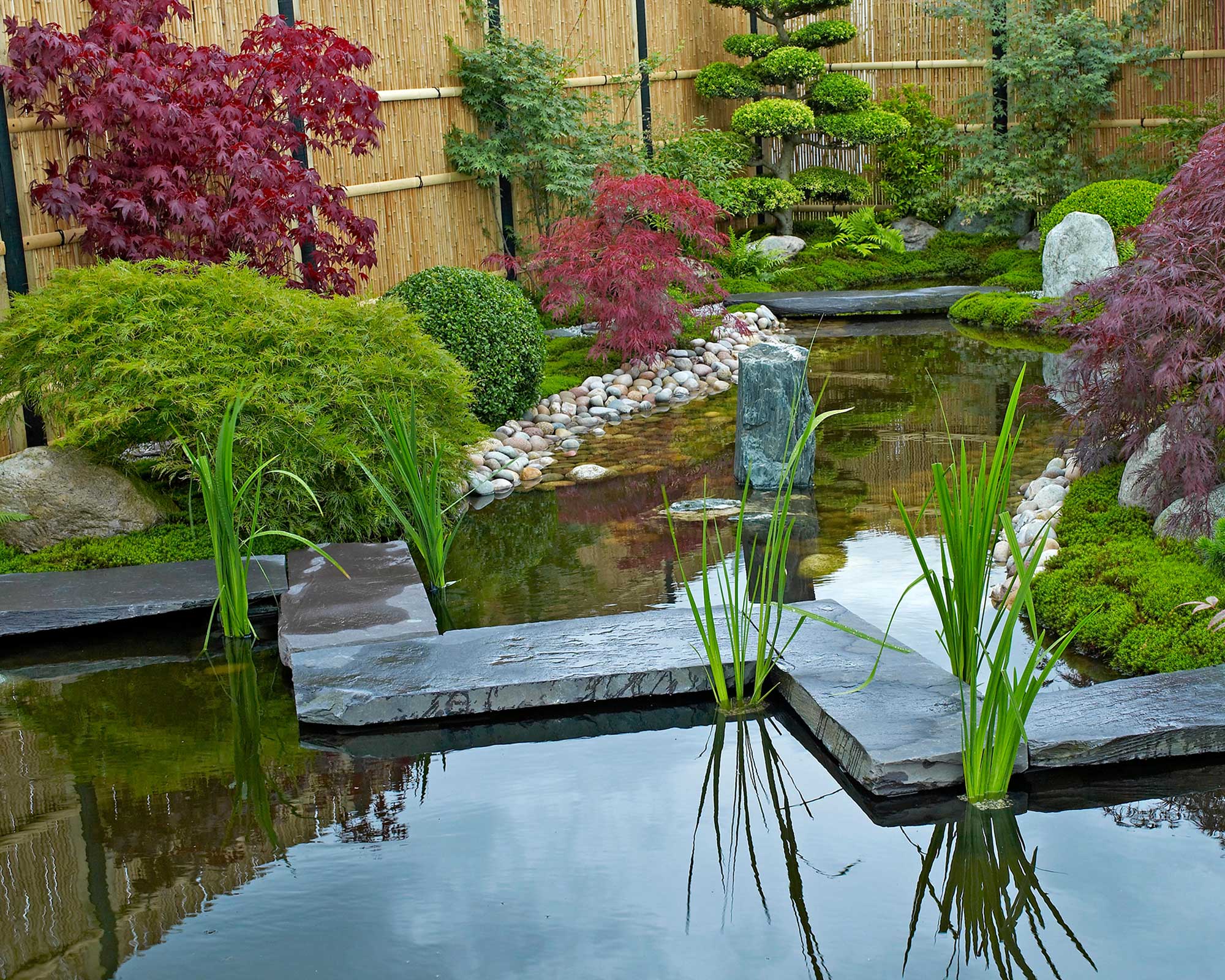
Smooth pebbles border areas of this pond beautifully
River rocks are naturally found in water, so it makes total sense to add them to the edge of a pond in your own backyard and recreate the look of a natural landscape. It's also a good way to hide unsightly pond liners.
This elegant look works beautifully for Japanese gardens, as demonstrated above. Simply pair with small acers, perhaps a cloud-pruned shrub or two, and maybe a small bridge or series of stepping stones for your own tranquil outdoor setting.
2. Incorporate into pathways

Combine timber with stones and soft planting
There are so many garden path ideas that can be used to pep up the journey from A to B around your plot. But mixing up textures, as seen in this setup above, is always a failsafe way to create a stylish impact.
Timber planks make a striking contrast against smooth, pale pebbles as seen here, while the pops of greenery add vibrancy and will encourage pollinators to your space, too. It's a lovely option for a walkway between a decked space and your home, or from a patio to a pond.
3. Mix up the textures in your borders

River rocks can be used as mulch
Add a relaxed, woodland feel to your flowerbeds by adding in a selection of river rocks here and there. It'll act as a non-biodegradable mulch, that's not only a good way to suppress weeds, but will also help to prevent soil erosion. Plus, the mix of textures will offer an aesthetically-pleasing contrast. Just be sure to pop down some landscaping fabric beneath to make maintenance even easier.
Adding larger boulders will elevate the look further and continue the theme, while creating sculptural focal points throughout the scheme.
River rocks are also wonderful if you're looking for garden edging ideas that have a more organic feel than modern looks on the market. As well as using them to line the edges of a path, you can edge the perimeter of your flower beds and borders to neatly define the zone and keep mulch and soil in.
4. Brighten shaded areas beneath trees
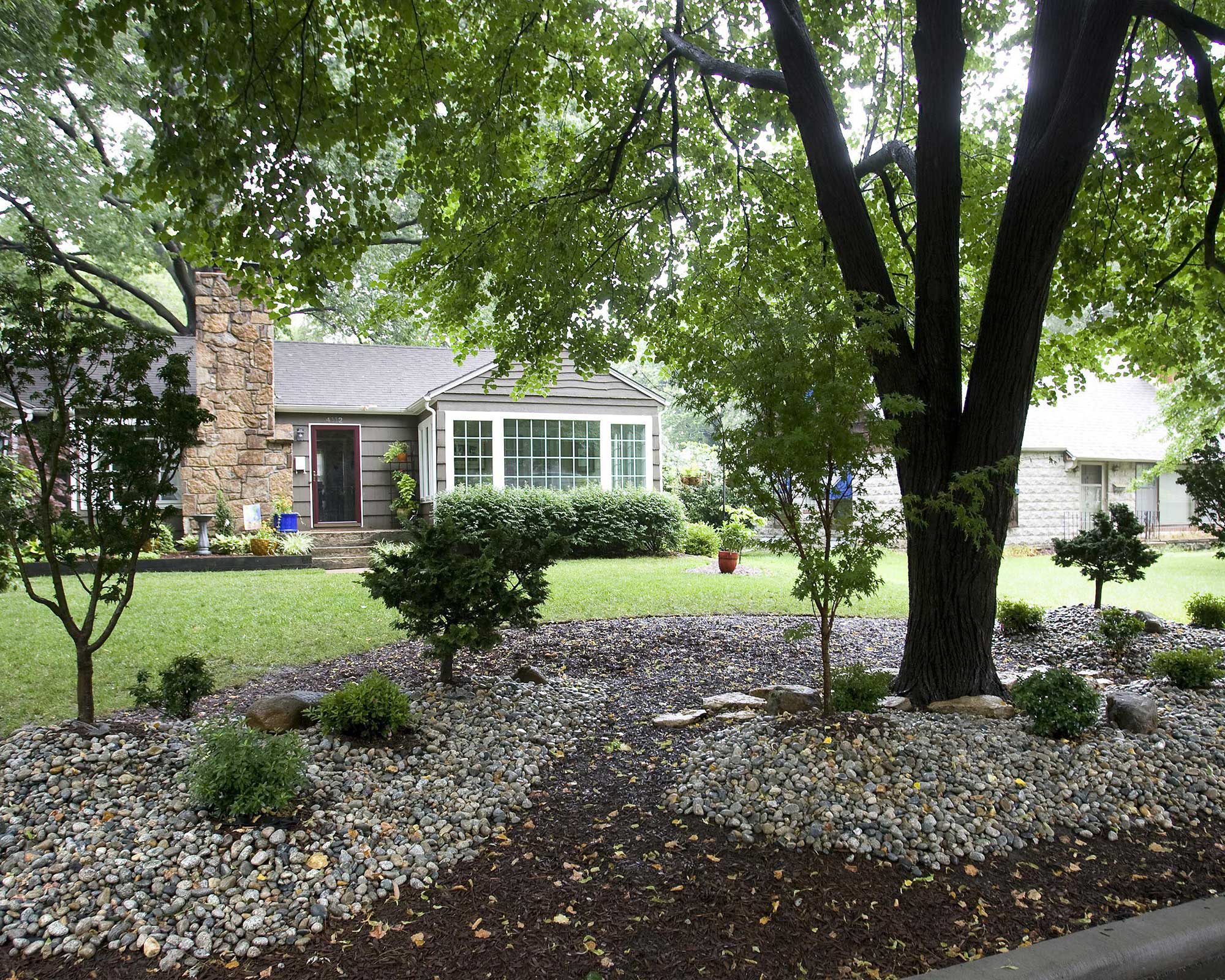
Dress up the space beneath a leafy canopy
Landscaping around trees can be tricky, and although there are some plants that will thrive beneath a leafy canopy, many won't survive in the dry and shaded conditions.
A simple and low-maintenance approach is to surround the base of your trees with river rocks. Pick a light shade and the space will instantly feel brighter, too. Add one or two plants for under trees to the mix, and perhaps a larger rock here and there, and you'll have a space that feels interesting and curated, yet organic.
You could always add a winding pathway made with bark chippings, too, for an exploratory, woodland vibe.
5. Soften the edges of a patio with pebbles

We love this tranquil setting
Pick river rocks in a hue to complement your paving ideas for the perfect border for your patio. They offer an almost Mediterranean-style vibe to this space, especially alongside hot-hued blooms to the left, and the soothing waterfall and spiky foliage behind.
Drought-tolerant plants, such as agapanthus, will thrive in stony surroundings, so consider bringing some into your scheme for extra visual interest. We love the gazebo in this plot, too – the ideal spot for whiling away a summer's afternoon with a glass of something cold or a cup of tea.
6. Combine with colorful flowers in a rock garden
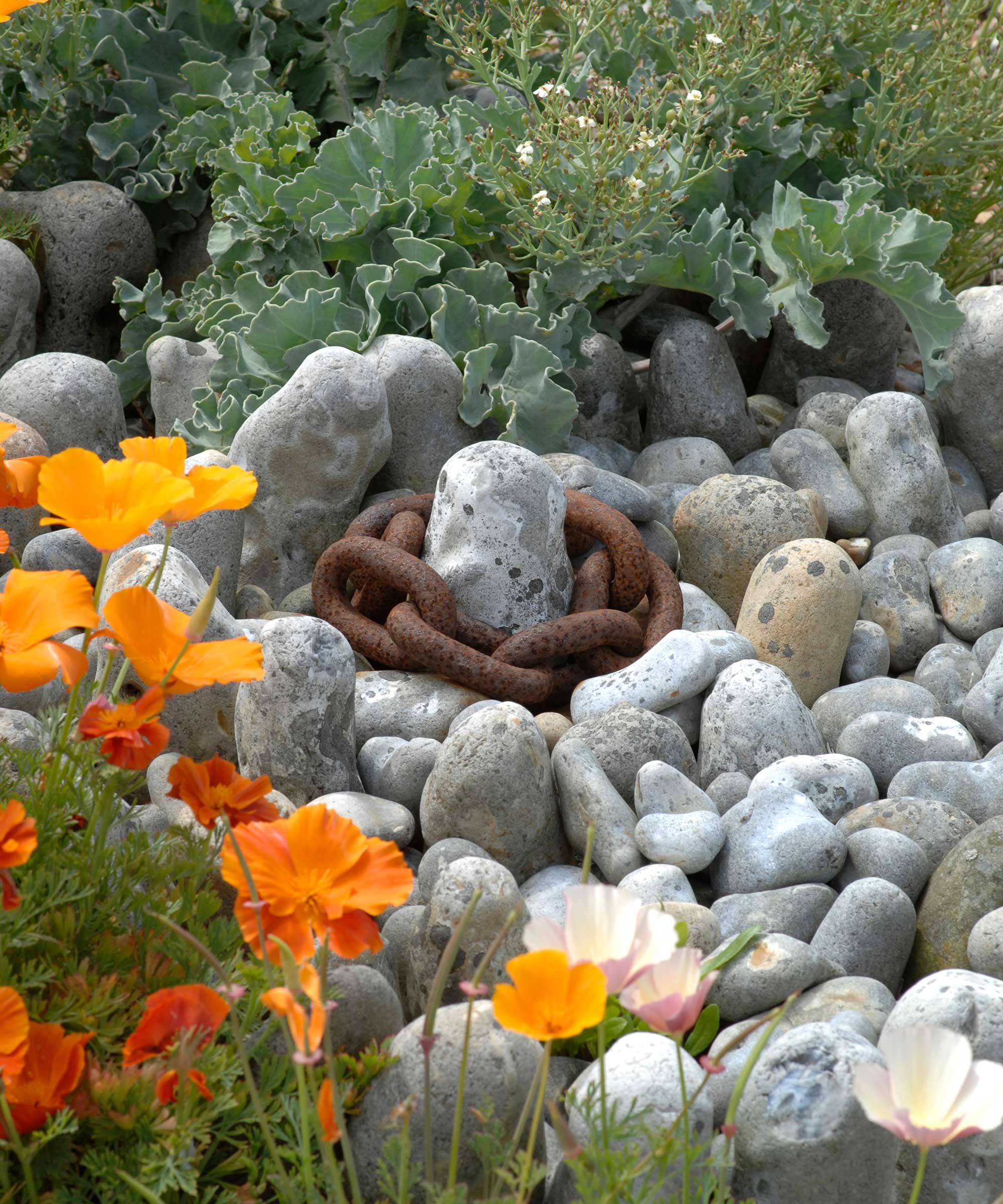
A stylish take on a classic rock garden
Speaking of drought-tolerant planting, have you checked out our guide on how to build a rock garden yet? River rocks are a gorgeous addition to these on-trend features, providing an interesting, tactile backdrop for colorful blooms and leafy foliage.
We especially like the fiery orange tones of Californian poppies in this scene as they stand out against the muted grays. And an artfully positioned, rusted chain makes for an interesting and characterful detail.
7. Border a wildlife pond

River rocks can provide access points to a pond for small creatures
Looking for wildlife pond edging ideas? River rocks are a great solution.
Positioned around the edge, they can provide an easy way for small creatures to safely get in and out of the water. And they're not just useful for putting around the perimeter – larger pebbles can be placed in the water itself, too. They'll provide a surface for insects such as butterflies and dragonflies to bask in the sun's rays, as well as create sheltered, underwater hiding spaces for smaller animals such as newts and frogs.
8. Line a fence for a stylish yet low-maintenance look

Keep it simple and chic
Looking for a low maintenance garden idea for pepping up your fence line? Consider a border made with pale river rocks, interspersed with the odd shrub.
It's a more minimal, easy-care alternative to billowing borders, yet still looks super stylish. Add stake lights for a nighttime glow and perhaps a garden statue or even a small water feature to finish the contemporary scene.
And if you want to go a step further, consider painting your garden fence in a modern hue – whether that's a chic gray, moody black, or fresh white. It's a budget-friendly way to pep up any timber boundary.
9. Contrast colors for dramatic impact
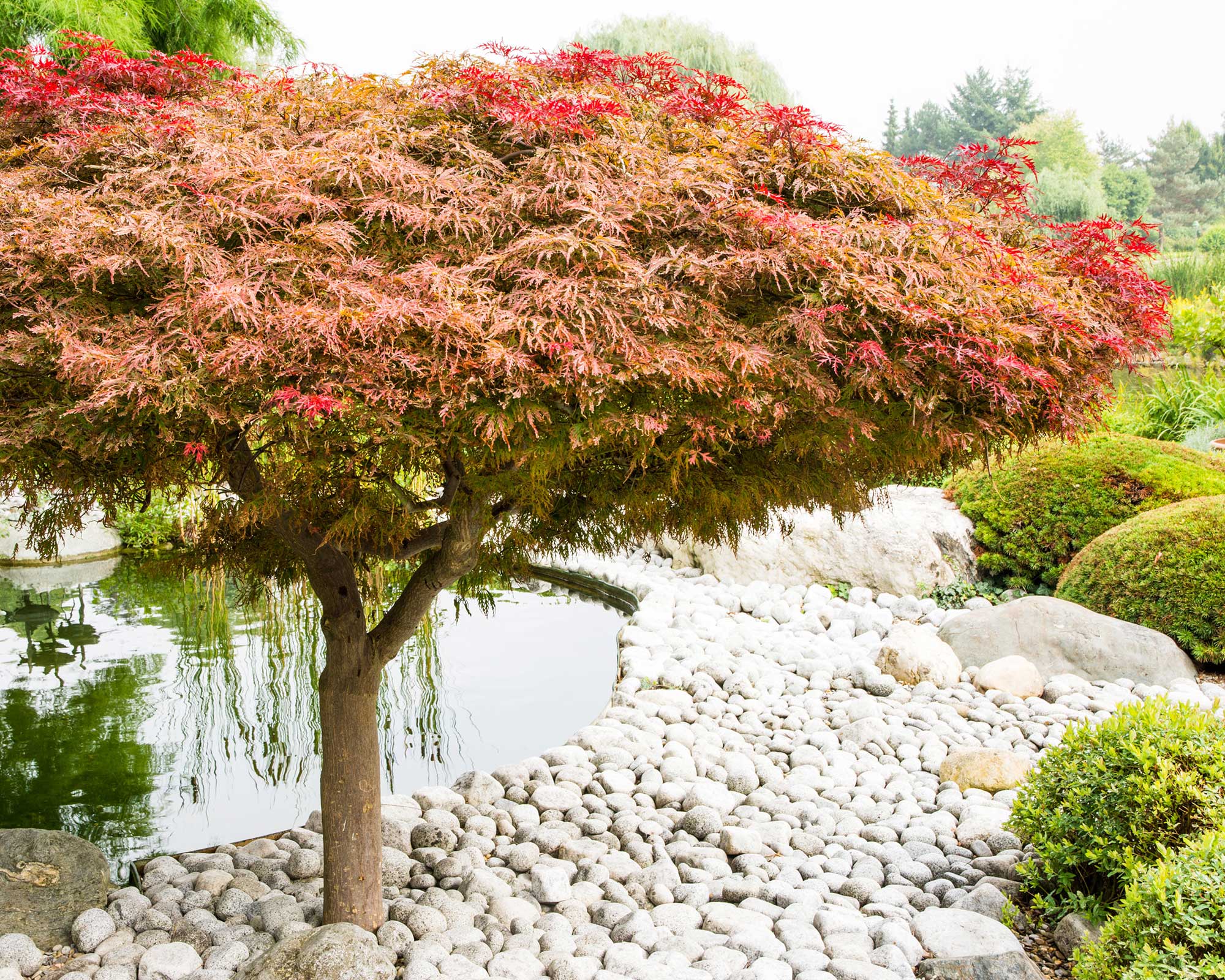
White stones complement this red acer well
When picking the color of your river rocks, think carefully about the overall look of your garden. Do you want them to provide a striking contrast with the surroundings, or blend into the background, for instance?
White pebbles look fabulous against this scarlet-toned acer and lush green shrubs, providing a striking contrast in hues. Black or dark gray pebbles can add a bold, modern touch to a space, and look gorgeous alongside lime-green foliage. Meanwhile, a mix of sandy hues can offer a more beachy vibe – a perfect pairing for the best coastal plants.
10. Integrate river rocks with your water feature
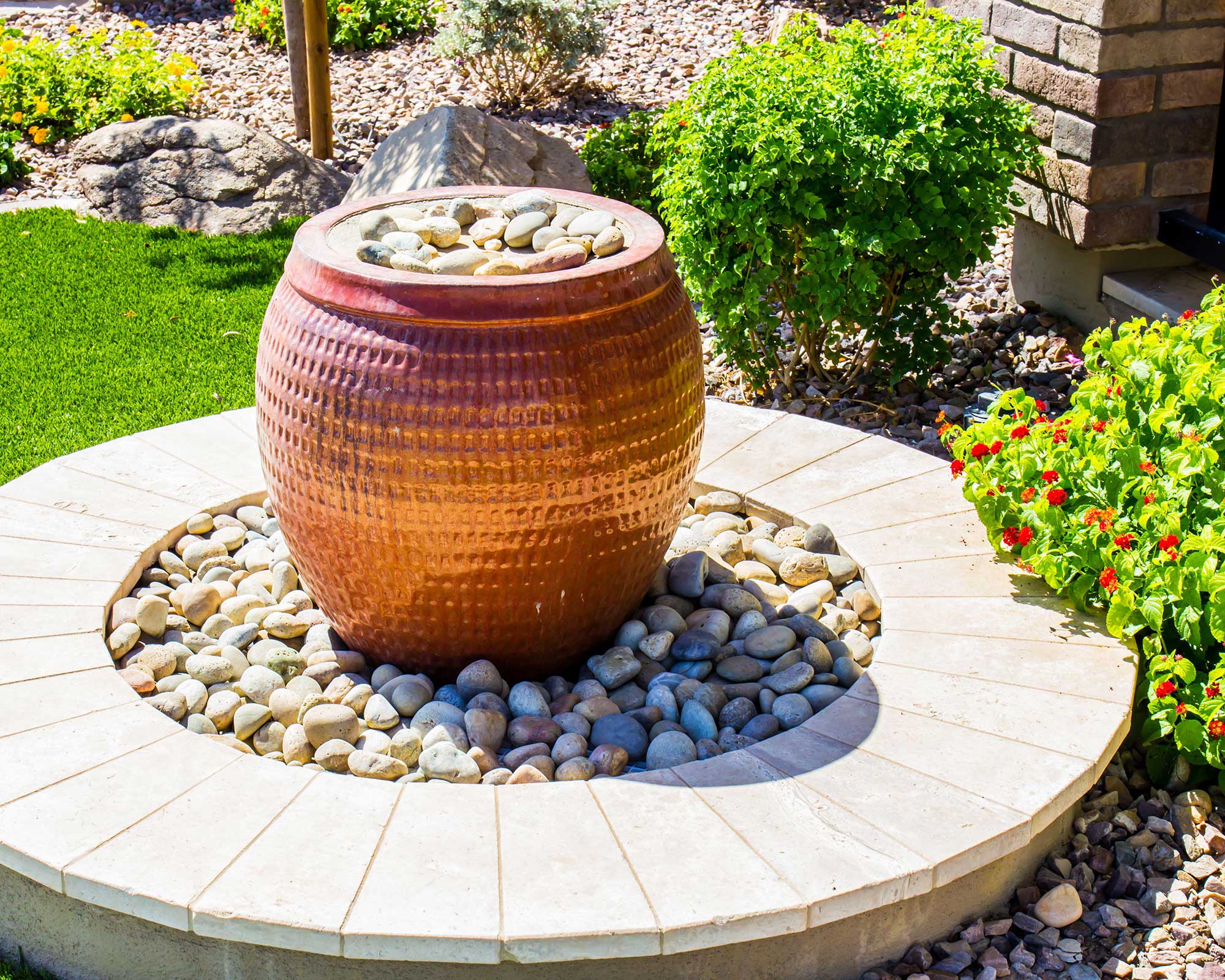
River rocks are a classic accompaniment to water features
River rocks are useful for covering unsightly drainage and pipework, while still letting water through. This means they are great additions to water feature ideas.
Take this setup, for instance, where they are used to surround a glazed urn that ripples with soothing water. It's the perfect way to create a more organic aesthetic for the feature, and it helps it tie into the stony surroundings, too.
How much do river rocks cost?
If you're feeling inspired to try landscaping with river rocks, you'll need to know how much to budget for. Well, according to HomeAdvisor.com, they cost $100–$800 per ton (the equivalent of £74–£590), or $0.05–$0.35 per pound (around 4p–26p). The specific cost depends on factors such as the size, shape, color, and whether the stones are polished.
Remember that it's almost always cheaper to buy river rocks, or any type of landscaping rock for that matter, in bulk. It can also be cheaper to buy stones from local quarries, as this will reduce shipping costs.
If you're looking to create a similar look but for a more budget-friendly price, you may wish to opt for gravel instead. Our gravel garden ideas have plenty of looks to get you inspired.
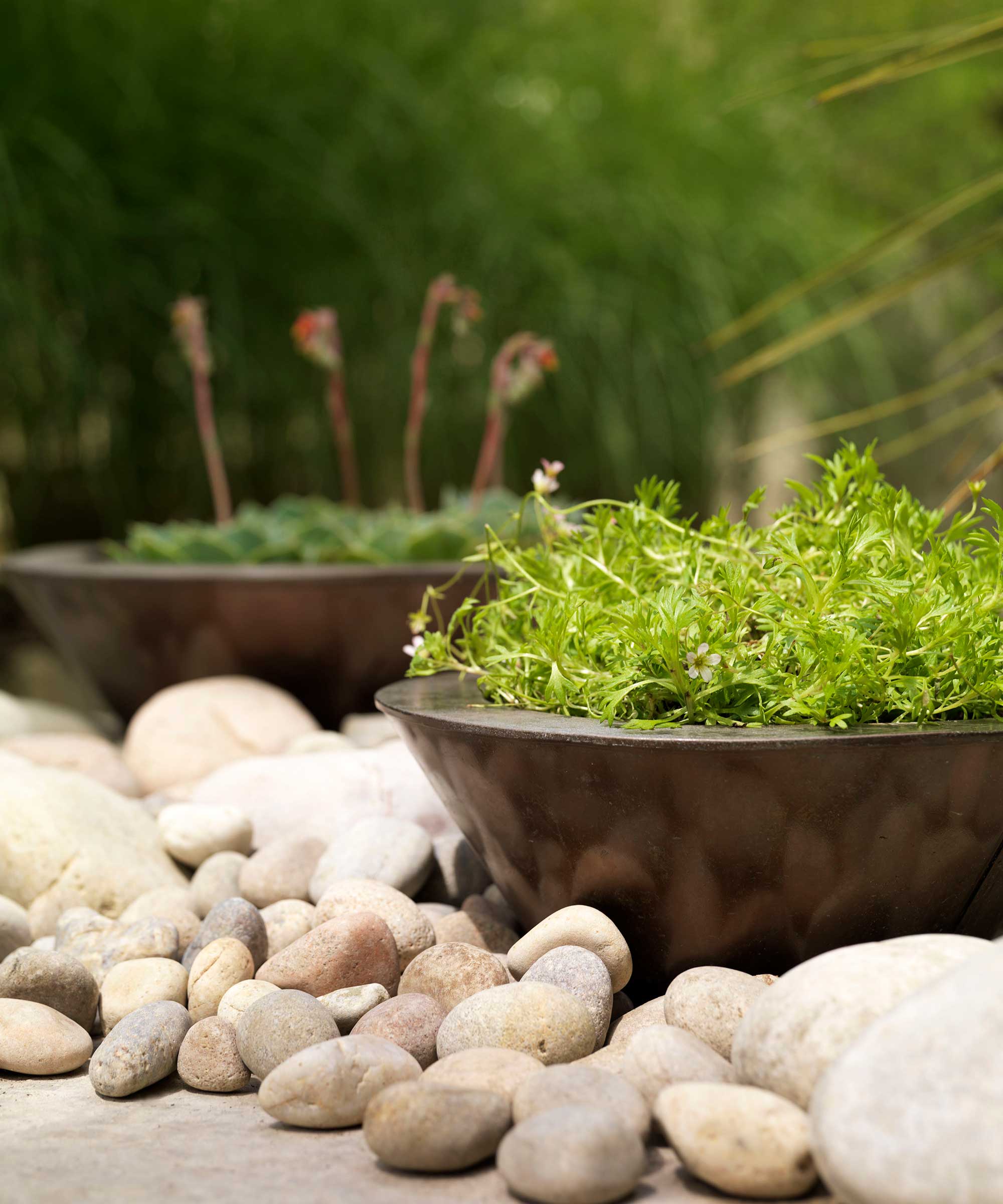
These white pebbles look lovely around modern planters
How do you prepare ground for river rocks?
In many cases, it's best to lay landscaping fabric beneath your river rocks. This will help to keep weeds at bay and prevent the stones from embedding in the soil over time.
If you're adding plants, simply cut holes in the fabric to install them, then carefully surround them with the rocks.
It's best to use river rocks in areas where you won't need to keep adding new plants – for instance, only in perennial borders (and drought-tolerant ones at that, as they do a good job at heating the soil when the sun shines). This is because, once they are laid, it can be quite tricky to add new plants.

The garden was always a big part of Holly's life growing up, as was the surrounding New Forest where she lived. Her appreciation for the great outdoors has only grown since then. She's been an allotment keeper, a professional gardener, and a botanical illustrator – plants are her passion.
